#creative production outsourcing
Explore tagged Tumblr posts
Text
2024 unwrapped: A year-in-review
It’s been quite a year, hasn’t it? The challenges facing media companies and publishers have been multifold, from tightening budgets to political change and a competitive landscape. Despite all that, it was a great year for the creative industry. We reflect on the year’s challenges, celebrate the milestones, and look ahead to what’s next...
We’re A Great Place to Work®, again!
EKCS became Great Place to Work® in India for the second year running. Great Place to Work® is the global authority on building great workplaces.
And they should know. They have surveyed more than 100 million global employees. Our offshore team is vital to EKCS, and the award is based on the experience and opinions of colleagues working at EKCS.
And it doesn’t stop there. This year, EKCS also won the ‘Support Team of the Year’ award at The Stevie® Awards. This recognizes our team’s efforts in supporting brands, agencies, and media clients to overcome production challenges and boost efficiency.

New starters
This year we grew from a team of 500 to 600, with some exciting onshore hires in both the UK and the US. We’ve had some great new starters join EKCS. These include Saba Said, who heads up our global communications team. We’ve also had several consultants join us, and we’ll introduce you to these creative brains in the new year.
Conference creativity
Conferences were a big part of the fall. The added bonus was escaping the English winter, albeit for a few days! It’s been enlightening to meet so many industry people at the events we have attended and sponsored this year. It helps to have our people on the ground across the world who can discuss all things creative production. We attended the Association of National Advertisers In-House Agency Conference for the first time. Watching global CMOs share their beliefs and state their predictions was truly inspiring. Keeping sight of the bigger picture while staying focused on our clients’ goals will be more important than ever in 2025.
Leadership in action: Aligning minds, solving challenges, and building bonds
On that note, at EKCS we’ve been doing more joined-up thinking as to how we can better serve our clients and deliver value in the changing world of production. Our leadership summits in the UK and India brought together EKCS’ business leaders from the UK and India. These twice-yearly summits were a powerful catalyst to align leaders, develop solutions to problems, introduce new strategies, and enhance collaboration across EKCS. We would be lying if we said it was all work and no play, as we like to insert a team challenge into the mix. In true EKCS spirit, these challenges were a bit like an India vs. England cricket match—fierce and fun, but whatever the result, they brought our onshore and offshore teams closer together.
AI-driven production power
We embraced automation and engaged with AI, all of which culminated in the launch of Mediaferry AI! You might have seen some of our media coverage. This cutting-edge, cloud-based service streamlines the production process—from briefing to campaign activation—and it is perfect for publishers, brands, and in-house agencies! We’ve received great feedback from our clients, so if you’ve not seen it already, why not book your demo today?

Resources wrapped up just for you!
This festive season, we’re sharing a little holiday gift—valuable resources to help you kickstart 2025.
EKCS Blogs: Grab a nutmeg latte or pour a mulled wine and have a read of our collection of insights and blogs covering creative production and creative teams.
Free Guides: Need to escape a festive full house? Take some time to download our free guides and take some time for reading.
Inside Jobs Podcast: Inside Jobs has continued to thrive in 2024, reaching a milestone number of subscribers and welcoming a phenomenal lineup of guests. Hosted in collaboration with IHAF, these podcasts provide inspirational intel from in-house agency leaders from some of the world’s biggest brands. Subscribe here and you’ll be inspired throughout 2025!
#in house agency uk#outsourcing creative production#creative production outsourcing#digital production
0 notes
Text
hmm sorry generative AI isn't another trademark use of progress it's qualitatively different the tradeoff isn't efficiency it's your independence
#not whump#this will be my only comment#like for the longest time#technological advances have always been a tradeoff between progress and independence and its then become a question of “is it worth it”#and like. factories and tech like computers and phones. sure yeah we're now more dependent on them#but they arent affecting how we think#or let me say that better#its not an outsourcing of our thoughts/ creativity#because its not about the production this time#its about the process#like no one thinks the same way for a reason its one of the defining things about humans#i had such an interesting conversation earlier about this#and im not saying theres no use for generative AI#its just making me a little. weirded out by how convential its become#there should be some trepidation about its use. well thought out before using it#idk though#troy rambles#sorry guys
26 notes
·
View notes
Text
Six Time-Saving Benefits of Outsourcing Video Production
In 2024, nine out of 10 businesses used video for marketing. These statistics highlight the growing dominance of video content in brand marketing strategies and the positive impact on consumer engagement and sales. Yet, producing high-quality videos can be a time-consuming and resource-intensive process. It’s hardly surprising that video production is the most common service social media marketers outsource. That's where outsourcing comes in, offering many benefits that can save your organization time and money.
Efficiency and expertise
Outsourcing video production enables brands and in-house agencies to tap into a pool of experienced professionals who specialize in visual content production. These offshore production experts come equipped with the latest technology and industry best practices, ensuring your videos are high-quality, produced efficiently, and expertly edited.
Concentrate on core business activities
By entrusting video production to an external team, your in-house staff can focus on what they do best. Be creative! This shift in focus can lead to increased productivity and better overall performance in your core business areas. It enables marketing and creative teams to concentrate on:
strategy
content ideation
creativity
and other tasks
Cost savings
While building an in-house video production team can be costly, outsourcing offers a more flexible and cost-effective solution. You avoid the high expenses of purchasing editing equipment and software, hiring full-time staff or freelancers, and training. It frees your team up. Instead, you pay for the services you need, when you need them, allowing for better budget management.
Scalability
Outsourcing provides the scalability to handle varying workloads. Whether you need a single promotional video or a series of training modules, an outsourced team can scale up or down based on your requirements. This flexibility ensures that you can meet your video production needs without the stress of managing an in-house video production project.
Fresh production insights
Offshore video production brings fresh perspectives and ideas that can enhance your content. Their diverse experiences can help you stand out in a crowded marketplace, delivering videos that capture attention and drive engagement.
Time-saving
Outsourcing significantly reduces the time it takes to bring a video project from concept to completion. With a dedicated team focused solely on your project, you can meet tight deadlines and respond to your business demands. Outsourcing creative video production allows your teams to remain agile, which is crucial to maintaining a competitive edge.
#outsourcing creative video production#offshore video production#in-house video production#in-house creative team#digital marketing
0 notes
Text


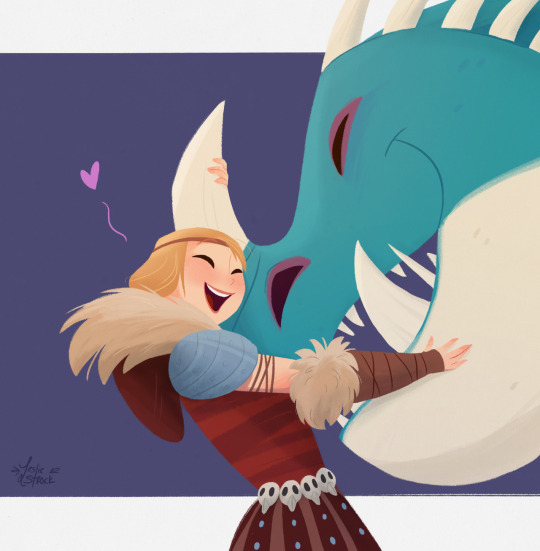
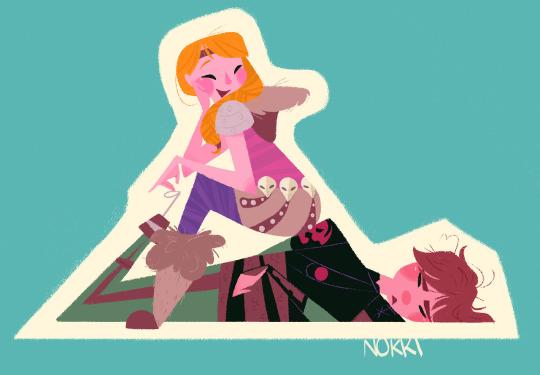
As a long time httyd fan who has been heavily involved in the fandom since the first movie and who has spent years working in the animation industry, I’d like to share my thoughts on the new httyd movie. Keep in mind, this is just my personal opinion and it's completely fine if you disagree with me. I just want to say a little something about all this that really bothers me.
The core reason that Dreamworks and Universal made this film is that it’s a quick and easy cash grab for them. Thats it. They don’t care about telling a good story or making a “better” version of the original movie for fans or even having an accurate portrayal of the characters/story. It’s purely about money. They know that fans of the original film will go see this movie, whether it’s good or bad. And those guaranteed ticket sales are all that matter to the studios. And with Universal, it has the added bonus of being a cheap promotional and merchandising opportunity for the new HTTYD land in Orlando that opens around the same time that the film is premiering in theaters.
And to help the studios make even more money out of this, they are using non-unionized VFX companies around the world to make this film, so that they can get cheaper labor and push the artists to do more that would be against American union standards. The same thing has probably happened with the costuming and fabrication for the filming, hence why the costumes look un-weathered and the sets look cheap. They don’t want to pay for the extra time and effort that it would take to make the practical bits of the production look good.
On top of all this, Dreamworks has already announced that they’re shutting down all their in-house animation projects in favor of using AI and outsourcing projects to cheaper international non-union studios.
With all this in mind, I just can’t support this film and I will not be seeing it in theaters. And I hope that others will do the same.
The only way to stop all these horrible “live action” remakes (which are actually just realistically animated remakes) is to not buy tickets to see them. Money is all that matters to these studios, and if they don’t make any money off of it, then they will stop and try something different. Maybe they'll even go back to focusing on original stories!
That’s the power that we hold as audiences. Our wallets help drive the decisions that the executives make. So support unique storytelling and gorgeous cinematography in movies. Support indie films. Support animators as they're fighting for fair pay and better contracts. But don't support a mediocre shot-for-shot remake riding on the coattails of an already successful film.
And I just want to wrap all this up by saying I have absolutely no hate towards anyone that has worked on the new film. Toothless looks incredible and I know the artists and creatives involved in this project did the best they could with what they were given.
But I also know that those same artists have so many more brilliant ideas that they would’ve loved to be given the creative freedom to do. I just wish hollywood would be willing to take a chance and let them do it.
#they could've made a film following the plot of the httyd books or even a different pov of what happened in Berk from a vikings view#those would've been much better options if they really wanted to utilize this IP in a live action or realistic animation format#but they chose the cheap option of literally copying an already successful film and throwing actors in there to say its new and different#this whole thing bugs me so much#i hope you guys will excuse this rant but I hate what hollywood has become and I hate that creatives are forced to make this junk for them#all while fearing for their jobs because of rampant layoffs#please help put an end to hollywood abusing creatives in the way that they are and don't watch this movie#httyd#how to train your dragon#hiccup#toothless#movie#live action#dragon#astrid#stormfly#cosplay#art#artists on tumblr
671 notes
·
View notes
Text
absolutely sick and twisted to see a community get recommended to me for queer people to "express themselves" with ai. politicians all across the globe coordinate plots to eradicate our communities and yall want to outsource your own creative thinking to luxury software products? what the hell is wrong with you?
#the ability to think your way through a creative project is immeasurably valuable. do not let tech CEOs steal it from you#if you have access to (1) tumblr and (2) ai programs you have access to the ability to actually make your own digital art#the brain exercise of making art with a mouse in mspaint will serve you better than any machine-generated glittery pig slop#shebbz shoutz
187 notes
·
View notes
Text
youtube
Beauty in Splash Art 3
League of Legends splash art is, on the face of it, perhaps an odd place to go looking for beauty. These are JPGs whose first and primary function is to hawk video game cosmetics for a free-to-play game, it's not exactly the sort of thing you expect artists to particularly flex their creativity for.
And true enough, a lot of splash art is fairly rote. Here's a character, wow look at their cool pose, don't you want to spend dollars to own this, and so on.
But sometimes, one of the artists working at Riot, or at their outsourcing studios, seems to get a bee in their bonnet, or maybe they just get excited about an opportunity to practise craft, and you get splash art that tries to do something more than simply sell the product, or artwork which displays a real flex of technical skill, often in ways which are functionally invisible at any of the common resolutions that the art will ever be displayed at.
There is genuine reward to be found in those pieces, in zooming in close and marveling at the level of effort spent. So let's spend about an hour doing that!
Splash arts covered:
Odyssey Sona - by Kelly Aleshire
Victorious Sejuani - by Francis Tneh
Aurora - by Jennifer Wuestling
Redeemed Star Guardian Xayah and Rakan - by Ina Wong
Empyrean Vex - by Horace "Hozure" Hsu
Winterblessed Diana - by Bo "chenbowow" Chen
Porcelain Irelia - by Alsie Lau
Toy Terror Cho'gath - by Fortune "Fortuneee" K
#tb posting#tbskyen#tb skyen#tb videos#league of legends#riot games#splash art#game art#sejuani lol#sona lol#aurora lol#xayah lol#rakan lol#star guardian#vex lol#diana lol#irelia lol#cho'gath#art criticism#Youtube
287 notes
·
View notes
Note
could Congress in theory pass something similar to the Enabling Act of Nazi Germany or are the constitutional limits on delegation of powers too strict?
I think they could, yeah. It won't look the same, right? Like you can't get rid of the Bill of Rights that way. But there is a lot you can do in between the spaces there. The US Constitution doesn't create a lot of rules around election management, for example, beyond requiring they happen in some form. Congress could vest expansive authority in the executive to police elections against "foreign threats" and you could do a lot that way. You can use the powers of policing/antiterrorism/what-have-you to allow the executive to use the threats of property confiscation (civil asset forfeiture babyyy, no trial required!) or imprisonment to force compliance from the population. We used the Insurrection Act to deploy the military to break up labor strikes in the past, you can get there again and do a lot more!
The biggest limit is probably going to be state-federal; you can get a lot of power invested in the executive branch via creative framing (the product of an 18th century constitution being stretched to meet the needs of a modern nation state - what can't the commerce clause do??), but there are fundamental rights that states have that the executive cannot break. You can corrupt elections, but states have strong powers to determine their structure that the federal government can't override and definitely could not be outsourced to the President. And you will legitimately not be able to establish a state religion or some other key things.
In the soft version of the Enabling Act, of course. But you can just not be a fucking coward about it - Congress passes a law tripling the size of the Supreme Court which they can totally do, you appoint your cronies, and then file an Executive Order declaring martial law to revoke the entire constitutional order which they rubberstamp
Which really isn't an indictment of the US Constitution? If your ruling political party universally agrees to say Il Duce Vivre is the fashion of the times, you are fucked no matter what a piece of paper says. I don't think the Weimar Constitution was that badly designed! It is a bit of a myth. The Nazis had co-opted the conservatives, ran the state, and used the threat of violence to coerce compliance from dissenters. The wording of Article 48's "Emergency Powers Clause" wasn't gonna change that. This is the hard limit of legalism, it can never bind the hands of men who choose not to be bound by it. If the US truly faces a "fascist coup" moment it probably won't be because the Constitution has a loophole for the moment of the coup. It will be because of the one million failures of design that led to that being possible and desired by so many of the political elite and voting public.
#Which to be clear I don't think we are at all yet#But we don't love the trendline being positive at all!
62 notes
·
View notes
Text
One way to spot patterns is to show AI models millions of labelled examples. This method requires humans to painstakingly label all this data so they can be analysed by computers. Without them, the algorithms that underpin self-driving cars or facial recognition remain blind. They cannot learn patterns.
The algorithms built in this way now augment or stand in for human judgement in areas as varied as medicine, criminal justice, social welfare and mortgage and loan decisions. Generative AI, the latest iteration of AI software, can create words, code and images. This has transformed them into creative assistants, helping teachers, financial advisers, lawyers, artists and programmers to co-create original works.
To build AI, Silicon Valley’s most illustrious companies are fighting over the limited talent of computer scientists in their backyard, paying hundreds of thousands of dollars to a newly minted Ph.D. But to train and deploy them using real-world data, these same companies have turned to the likes of Sama, and their veritable armies of low-wage workers with basic digital literacy, but no stable employment.
Sama isn’t the only service of its kind globally. Start-ups such as Scale AI, Appen, Hive Micro, iMerit and Mighty AI (now owned by Uber), and more traditional IT companies such as Accenture and Wipro are all part of this growing industry estimated to be worth $17bn by 2030.
Because of the sheer volume of data that AI companies need to be labelled, most start-ups outsource their services to lower-income countries where hundreds of workers like Ian and Benja are paid to sift and interpret data that trains AI systems.
Displaced Syrian doctors train medical software that helps diagnose prostate cancer in Britain. Out-of-work college graduates in recession-hit Venezuela categorize fashion products for e-commerce sites. Impoverished women in Kolkata’s Metiabruz, a poor Muslim neighbourhood, have labelled voice clips for Amazon’s Echo speaker. Their work couches a badly kept secret about so-called artificial intelligence systems – that the technology does not ‘learn’ independently, and it needs humans, millions of them, to power it. Data workers are the invaluable human links in the global AI supply chain.
This workforce is largely fragmented, and made up of the most precarious workers in society: disadvantaged youth, women with dependents, minorities, migrants and refugees. The stated goal of AI companies and the outsourcers they work with is to include these communities in the digital revolution, giving them stable and ethical employment despite their precarity. Yet, as I came to discover, data workers are as precarious as factory workers, their labour is largely ghost work and they remain an undervalued bedrock of the AI industry.
As this community emerges from the shadows, journalists and academics are beginning to understand how these globally dispersed workers impact our daily lives: the wildly popular content generated by AI chatbots like ChatGPT, the content we scroll through on TikTok, Instagram and YouTube, the items we browse when shopping online, the vehicles we drive, even the food we eat, it’s all sorted, labelled and categorized with the help of data workers.
Milagros Miceli, an Argentinian researcher based in Berlin, studies the ethnography of data work in the developing world. When she started out, she couldn’t find anything about the lived experience of AI labourers, nothing about who these people actually were and what their work was like. ‘As a sociologist, I felt it was a big gap,’ she says. ‘There are few who are putting a face to those people: who are they and how do they do their jobs, what do their work practices involve? And what are the labour conditions that they are subject to?’
Miceli was right – it was hard to find a company that would allow me access to its data labourers with minimal interference. Secrecy is often written into their contracts in the form of non-disclosure agreements that forbid direct contact with clients and public disclosure of clients’ names. This is usually imposed by clients rather than the outsourcing companies. For instance, Facebook-owner Meta, who is a client of Sama, asks workers to sign a non-disclosure agreement. Often, workers may not even know who their client is, what type of algorithmic system they are working on, or what their counterparts in other parts of the world are paid for the same job.
The arrangements of a company like Sama – low wages, secrecy, extraction of labour from vulnerable communities – is veered towards inequality. After all, this is ultimately affordable labour. Providing employment to minorities and slum youth may be empowering and uplifting to a point, but these workers are also comparatively inexpensive, with almost no relative bargaining power, leverage or resources to rebel.
Even the objective of data-labelling work felt extractive: it trains AI systems, which will eventually replace the very humans doing the training. But of the dozens of workers I spoke to over the course of two years, not one was aware of the implications of training their replacements, that they were being paid to hasten their own obsolescence.
— Madhumita Murgia, Code Dependent: Living in the Shadow of AI
70 notes
·
View notes
Text
Soooo they made a Rick and Morty Anime and it's… really fucking bizarre. With the skyrocketing popularity of Anime in the US and other countries in the past decade, this show, being published by Adult Swim, is part of a growing trend of hybrid productions that span across multiple industries and give the admins at MyAnimeList a headache trying hopelessly to figure out what is and isn't technically anime. (though, side note: with the amount of outsourcing that's been integral to most animation for several decades, the distinction has really only been superficial from the start, so it was always a pointless endeavor.)

Creator Takashi Sano (佐野 隆史, Tower of God Season 1) went into it with the goal of creating "a story full of American sensibilities from a Japanese perspective." So, did they beautifully blend two cultures and animation styles to create a whole that's greater than the sum of its parts like Scott Pilgrim Takes Off or Cyberpunk: Edgerunners? Oops, nope! They took only the downsides of both industries and slapped 'em together into this monstrosity:
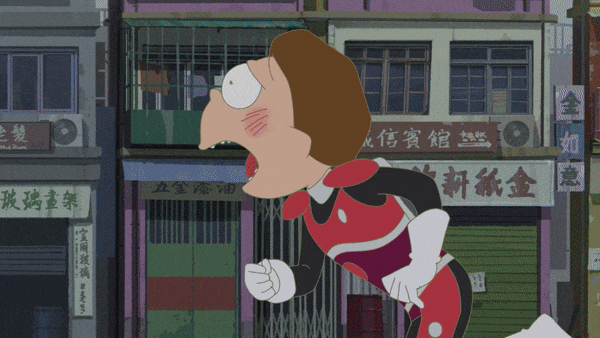
Rick and Morty uses a 2D puppet animation style, in which characters are drawn, rigged, and animated sort of like a 3D character model, with a set of complex layers and bones that warp them so they only need to be redrawn when necessary. This means they can take these simple, almost childish character designs, and digitally put them into very smooth motion with tons of frames without needing animators to draw each individual frame by hand.
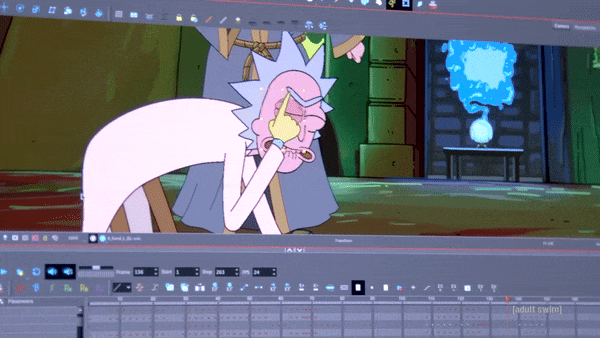
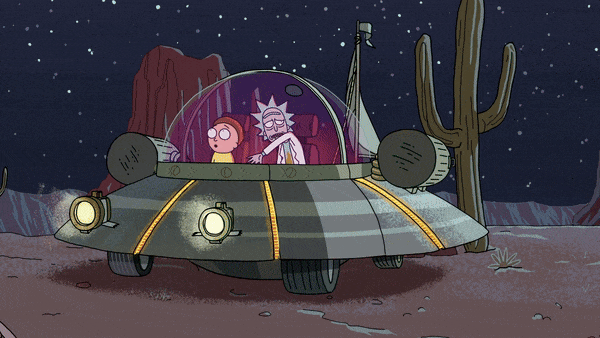
This style became popular around the 2000s with online Flash cartoons like Homestar Runner, and the original short, "The Real Animated Adventures of Doc and Mharti" even uses a way more primitive version of the same technique.
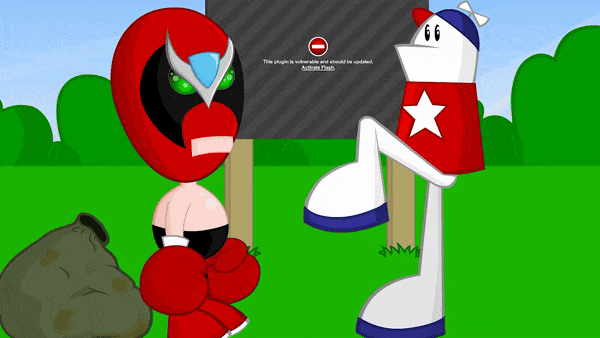
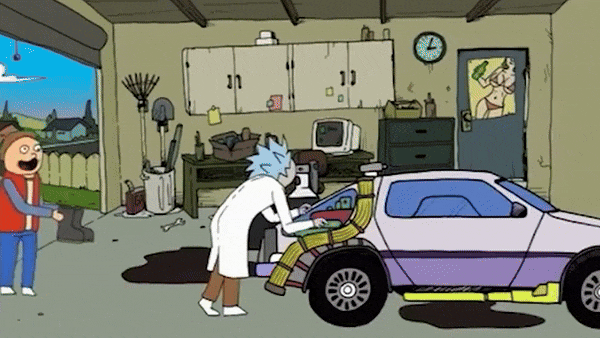
On the other hand, the TV Anime industry makes pretty much the exact opposite compromise to achieve quality with limited resources: more detailed designs and illustrations, but strategically limited frames - by standard, 8 frames per second for the majority of scenes. (This is obviously a generalization)
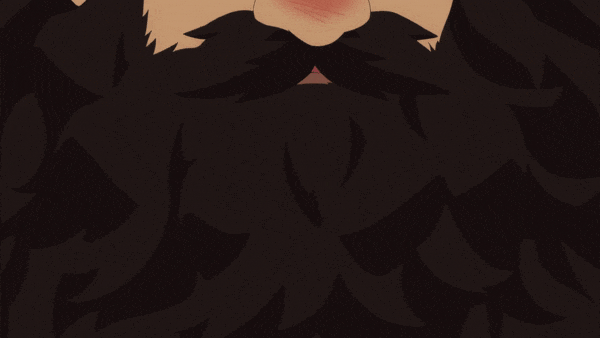
So what do you get when you take the simple, cartoony western style and pass it through the Japanese workflow (likely with very little funding)? Well, an uncanny-valley worst-of-both-worlds scenario without the ultra-smooth motion of American puppet animation, OR the detail and creative camerawork of eastern frame-by-frame animation, of course!
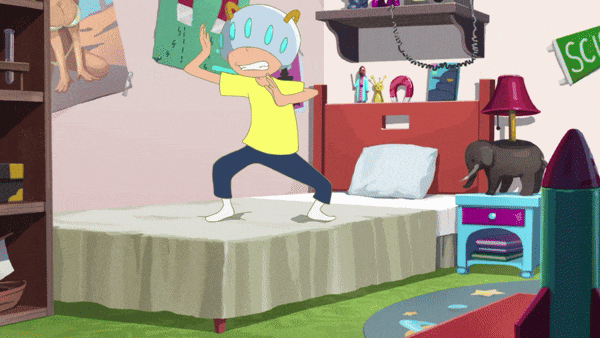
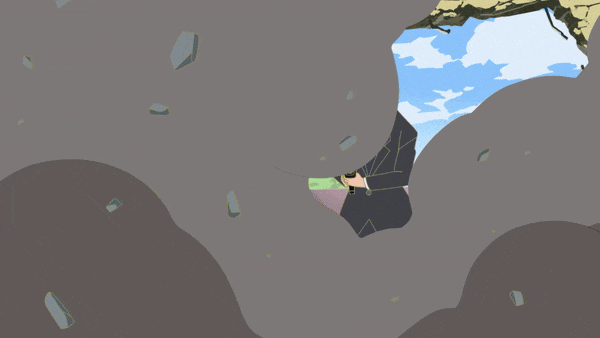
And that's not even to mention the cultural aspects, convoluted plot, irritating OP song, and voice cast that doesn't match the original show! I get more into the rest of that stuff in this full video, so if you found this at all interesting, go check it out:
youtube
Also, I've been checking on the discussion threads on Reddit and MAL after each episode, and by episode 8, they are GHOST TOWNS. So I truly believe I am the only person still watching this show at this point. But I must see it through.
#anime#animation analysis#rick and morty#rick and morty the anime#mini essay#video#gif warning#Youtube
78 notes
·
View notes
Text
youtube
Some additional thoughts regarding the recently announced Astartes 2.
I don't pretend to have any particular inside knowledge of the situation between Games Workshop and the various creators that they've tangled with over the years. A lot of people have a lot of thoughts about the fanpocalypse of 2021 which resulted in SODAZ's disavowal of Warhammer and the spectacle Bruva Alfabusa made of ending Text-to-Speech, among others.
But on the flip side, you have creators like Richard Boylan that successfully parlayed a YouTube video into the Warhammer+ Angels of Death series; and despite memory holing the Lord Inquisitor, Erasmus Brosdau went on to direct the Enemy Without.
So it's not entirely beyond the ken that there's a wholly anodyne explanation for why, after five years, Games Workshop is finally returning to Astartes, and any rumor of acrimony between the company and their creatives is just a pernicious libel like the Warhammer/WarCraft connection.
I had previously believed - and, if I'm being entirely honest, still do - that there must have been some sort of creative disagreement between Games Workshop and Pedersen regarding the direction that Astartes should take, given the alacrity with which Boylan's project was produced while Pedersen's languished, even if it was something as simple as reticence to revamp the project to showcase Primaris Space Marines instead of the classic style.
As I observed at the time, Astartes was the single best piece of Space Marine media of the last thirty years and precious little has come out since that can hold a candle to it. I don't hold any of the subsequent Warhammer+ series to date in particularly high regard - bully for Boylan, but Angels of Death bored me to tears; Iron Within had all the cinematic spectacle of a Playstation 2 cutscene; and Pariah Nexus could charitably be described as unfocused, or uncharitably as a hot mess. I've been so thoroughly underwhelmed by what's on offer, I skipped the Tithe entirely and I have no comment on anything it depicted so don't at me.
But, here's the thing that really has me concerned, and to which I alluded in my earlier post:
This teaser trailer is not actually clips from the new animation, instead showing a compilation of shots that represent the former lives of the characters that will appear in the show.
While there is some footage that may not have previously been released, I'm extremely confident that almost everything seen in the trailer is taken from the original development of Astartes 2 before Games Workshop got involved, and the project has been on ice ever since. Some clips like the orks dogpiling the Lamenter have previously escaped from behind the Patreon paywall and at this point, I'm reasonably certain that most of it can be found as reuploads on YouTube.

The best case scenario, and my hope for the series, is that Pedersen's Digital Bones brand/studio/Patreon campaign is basically the licensee for Astartes and is granted sufficient autonomy to produce a product that's faithful to his creative vision for it.
It's not enough to simply mimic the structure and style of the original short, Secret Level did that and while it was certainly a higher quality production than any of the outsourced industrial animation "Warhammer Storyforge" slop that's appeared on Warhammer+, it's self-evidently an imitation; like a cover band serviceably performing your favorite song. It has to be better than that.
And I sincerely hope that it is, but I'm not getting hyped for it and I warn you not to, either.
20 notes
·
View notes
Text
Stuff That Helps Me Write: Procrastination Busting (Novelty Edition)
So, last week I was talking about the interest based nervous system versus the importance based nervous system, and how people with interest based nervous systems are driven by urgency, novelty, challenge/competition, and interest, versus the more common importance based nervous system, which is driven by importance (to yourself or to others), rewards, and consequences.
I don’t know whether ADHD or autism has a larger impact on my life — they often impact different areas, and they frequently compensate for one another in the areas they do overlap, when they aren't forming an unlikely alliance hellbent on my destruction. But my writing process is 100% run by ADHD. So because these tips are the ones that work for me, and my writing process is, top to bottom, ADHD as fuck, they’re probably going to be pretty heavily slanted toward ADHD peeps, though of course YMMV.
Tackling novelty first, because, well, of course I am. This can also appear as ‘novelty/creativity’, but honestly, I think that’s a little redundant: doing, say, a creative version of a task is simply injecting novelty, and I think novelty is a much easier concept to understand for most people than creativity is. Novelty can be boiled down to single words we learn the meaning of at a young age (new! Different!), whereas creativity has fifteen different definitions, every single one of which might spark debate. So for our purposes, I’m sticking with just novelty.
Here are some ways I inject novelty into my writing process:
Roll the dice.
This doesn’t have to be dice, though the 20-sided ones are absolutely great for this. You can use decks of cards, random number generators, slips of paper, whatever — one of the best ways to make yourself do a bunch of shit you don’t actually want to is to attach those tasks to numbers (or colours, or suits, or whatever), and let fate decide. This can work in a lot of ways: you assign each task to a number, say, or you roll the dice on how long you have to work on it, or what order you’re doing them in, or whatever. I tend to be much more chill about doing a task when The Dice are the ones telling me to do it. It’s stupid. It works.
Roll the dice (pt 2)
This is also a fun way to create prompts: say each number is a character. You roll the dice: okay, I’ll write about David. Now I’ve associated the dice with a word, or a concept, or whatever. Okay, David and touch. Insta-prompt, no creative thinking required.
Prompts
Speaking of prompts and lack of creativity: I have tricked you all. Oh ho ho. You think you are getting a fill to a prompt you want to see (and, admittedly, you are, as long as I haven’t wandered off course, which cannot be guaranteed), but in return I am getting writing ideas without actually needing to have them! I don’t think I would be able to write 100+ stories a year if I had to think up every single idea myself, but if you outsource the creativity — well, win-win. Someone gets their prompt filled, and I get the spark of inspiration I need to fuel my writing.
Obviously this one needs to be adapted just a bit for other scenarios, but you can gather inspiring things (lines from books, poetry, lyrics, whatever) for future inspiration, you can look for online writing prompts or tell yourself you’ll write to fill a category (senses, say, or seasons, or elements, etc etc). Basically, if you don’t know what to do, forcing yourself to respond to a prompt, or follow a theme, often provides just enough constraints for creativity to happen.
When you’re stuck, move on to something else
It’s very common productivity advice to focus on just one thing and do it start to finish before you move on to the next. Don’t do it.* It’s a trap.
I do agree with the ‘one task only’ advice inasmuch as multi-tasking… doesn’t actually exist (if we’re talking something like ‘writing and listening to music’, or ‘doodling during a lecture’, that can go great, but that’s not really multitasking, so much as adding complementary stimulation. If you’re trying to, say, write an essay during a lecture, at least one (and probably both) of those tasks will suffer.) but beyond that, no.
It’s probably great advice if you’re neurotypical but I genuinely cannot think of a worse suggestion for anyone with low frustration tolerance and fucky dopamine. I hit an obstacle in that ‘just one thing’ I am doing? Cool, great, guess it’s time to stop doing it forever.
If you’re working on several different things (especially if those things use different skills and/or headspaces), when you get stuck on one, you can pivot to work on something else and let your subconscious do all that cool underrated stuff in the background, and maybe when you return to it you’ll have figured out a way around whatever your obstacle is. And even if you haven’t, at least your frustration tolerance will have been reset.
If the project you’re doing isn’t working for whatever reason, especially if you’re growing frustrated (nothing good ever follows after the point you snap at your blameless computer), do something else, and come back to it when you’re in a better headspace. Some things you have to muscle through for various reasons: say, you procrastinated on it and it’s due tomorrow. But most things you don’t. So don’t.
*I’ll straight up say I can ‘do just one thing’ for longer periods with less stress now that I’ve been medicated, but it was an awful, painful process when I wasn’t, so I still don’t really recommend it for those who have fucky dopamine.
Do! Multiple! Projects!
Yes, this can bring us to the ‘start 17 projects and finish none, don't you dare look at my WIP folder’ ADHD trap, but there’s a pretty good place between extremes. The main reason I work on multiple series at a time (plus outtakes!) is so that if I’m stuck on one, or it’s not inspiring me, or I’m just not in the right mood, I don’t have to stare at my blank screen feeling like a complete failure, I can just scoot on over to work on something else that's calling to me. Do I always do the most important thing? Or the one that’s due next? Or even the one I want to work on? Perhaps not, but I do spend the vast majority of my writing time actually writing, which is more than a lot of people can say.
It helps to have projects in different areas of your life and different stages of completion, for extra variety (and therefore novelty), just beware the ‘I have 5% left of this project to do, shouldn’t take more than 7 years’. When you do reach that final stage, that is when it’s a good idea to get laser focused on ‘just one thing’.**
**Big caveat with the above tips on NOT focusing on 'just one thing' is that I’m specifically referring to ‘typical’ tasks, not hyperfocus. If you’re hyperfocusing on something, and it’s not hurting you (ie keeping you from feeding yourself, basic self-care, sleeping, genuine obligations, etc), you ride that high as far as it takes you, baby. The ability get 5 days of work done in 5 laser focused hours would cost a fortune if they could replicate it, by all means use it to your advantage. But you do need to rest and recharge after: it drains the hell out of your mental resources and cannot be depended on indefinitely. It’s the very best tool in my toolbox. If I use it without allowing myself to recharge I will lose access to it indefinitely.
Change something about the process
It doesn’t need to be a big thing. I can switch from using my laptop to writing by hand. Or write in my bedroom rather than my office. A lot of my internal resistance to tasks is ‘this is boring’ — I’m lucky that doesn’t often happen with writing, because it’s inherently interesting to me, but sometimes you’re just stuck, and a change of scenery, of tools and equipment, of context (say, go write the POV of another character if you're stuck on a scene) is enough to shake the blah. I’m going to go into that in a lot more detail when I hit ‘interest’ and ‘challenge’ because those are both great things to inject when things have gone stale, but a lot of the time, it doesn’t matter what the change is: the fact there was a change is enough.
37 notes
·
View notes
Text
0 notes
Text
Hello, folks. This is your Oldie Chinese Diaspora Anon™️. I am starting to feel like I sound like bad news bears, so I would like to make my stance clear here. I have nothing against blind box dolls – heaven knows, I have a couple of them, too. It’s just unfortunate that I keep on encountering troubling news when it comes to blind box dolls, it seems. Please bear with me, would you?
Now, I need to introduce you to an... old friend. While we all know the resin recaster and his myriad of companies, I think I have brought up the vinyl recaster, DBS, a few times before as well. As a refresher, DBS is a toy company that specializes in vinyl and ABS toys. They bill themselves as the creators of “proudly MiC” toys for the next generation. However, their dolls have been found to be “recasted” from resin into vinyl and they have been plagiarising from several different companies, from Koreans to down-home Chinese. The MäyTrëë line of blind boxes were rejected by the BJD community because while the original designer was independent, the dolls were made by one of the DBS companies and was thought to be one of their subsidiaries. (more information here: https://the-bjd-community-confess.tumblr.com/post/727751969206304768/hello-anon-this-is-your-oldie-chinese-diaspora )
With that as a preamble, let me introduce you to the “Inedible Rabbits” dolls (Well, these ones: https://www.kikagoods.com/products/moon-jumping-time-bunny-series-1-12-action-figure-bjd-blind-box?variant=44766128931050 ). Similar to the “Escape Plan” dolls, they were created by a team of newbies who first 3D-printed their designs and pitched them to what’s akin to a Chinese-version of a Kickstarter called Modian. During the crowdfunding period, people can pre-order these dolls while the team running the KS maintain regular updates, chase goals, changes to the designs, etc. The final production is usually outsourced to a factory. The team is, in theory, working with the team all the way until delivery. I still vaguely remember someone asking “why aren’t there KS campaigns for dolls?” Well, you’re about to find out why… it wasn’t the price or the long production time, There’s a lot more to it.
As with the “Escape Plan” team, there’s a gap between the final products when compared to the samples (https://the-bjd-community-confess.tumblr.com/post/756541155738615808/一万次出逃计划开箱-避雷快跑哔哩哔哩bilibili ). One of the problems that was encountered by the buyers from the Escape Plan Team was that they have gone AWOL when people started to receive their dolls and started complaining. With the Inedible Rabbit Team however, my sources reported worse issues with communication. The creative team was not only unresponsive most of the time but they would block anyone who even asked benign questions. We also found out that the creative team behind the Inedible Rabbits did not apply to become a company prior to establishing their KS. It means that all of the transactions are considered personal (think F&F). With their frequent and wilful blocking of people, there are a lot of donors who are worried about how shady their behaviour is.
This is the latest expose from a Chinese source: https://www.xiaohongshu.com/explore/66e00cce000000001e01903f?app_platform=ios&app_version=8.52&share_from_user_hidden=true&xsec_source=app_share&type=normal&xsec_token=CBUsqAi70IwpfK_-OZEZS28zESD2e88FIMRgVnkEaN3D8=&author_share=1&xhsshare=CopyLink&shareRedId=ODlFNzlGND02NzUyOTgwNjg5OTc7Szk8&apptime=1725972303&share_id=49435c4b26604cbe8cd6fd49fc41db11 And this is a summary by a Taiwanese proxy: https://www.plurk.com/p/3gac0e1qck (please feel free to use a Google Translator to help you)
The Taiwanese Plurk mentioned that the clothes of the dolls were made by the infamous DBS. This was discovered from a video that the Inedible Rabbit Team posted on their social media showing the interior of their outsourced factory that made clothes for them. (can be seen here: https://www.xiaohongshu.com/explore/66e26d2a000000001e0193cc?app_platform=ios&app_version=8.53&share_from_user_hidden=true&xsec_source=app_share&type=video&xsec_token=CBaBewvBjppksg843In6KcCKwy5e3Tbv8rN-f9ARvjXks=&author_share=1&xhsshare=CopyLink&shareRedId=ODYzRUU9PTw2NzUyOTgwNjY0OThISEtL&apptime=1726233161&share_id=189d6a99974941f899342c780b0e8890 ) At the 0:12 timestamp, a box with the DBS logo was shown very briefly in a pan-over shot. (seen here: https://www.xiaohongshu.com/explore/66e283db0000000027002ca0?app_platform=ios&app_version=8.53&share_from_user_hidden=true&xsec_source=app_share&type=normal&xsec_token=CBaBewvBjppksg843In6KcCK1D4UzhNUD8Fm5_7tph_yA=&author_share=1&xhsshare=CopyLink&shareRedId=ODYzRUU9PTw2NzUyOTgwNjY0OThISEtL&apptime=1726233089&share_id=9de63adea9b14bd191309c996ed2bc29 ) Thanks to this discovery, a lot of the collectors and donators who also own resin BJDs are asking for refunds because they do not want to be associated with DBS in the fear of being seen as pro-recast. Thanks to people pulling out of the KS, the proxy has informed me that some of the unlocked stretch goals would most likely be rescinded. She is afraid that if too much of the funds get pulled out, the creative team may just pack up and do a rug pull with the money. Thanks to the fact that they never registered as a company, if they run, there’s basically no way to get that money back.
I do not want to be seen as someone who stands in others’ way of having a good time and earning money. But I also cannot stay quiet when I know that blind box dolls are a lot of new collectors’ gateway into resin BJD. This is akin to me knowing that something is a recast but fail to warn the new comers ahead of time. If anyone gets looked down upon or rejected from a group due to association with a doll that uses DBS clothes, I don’t think I can quite live with myself. So… thank you very much for lending your ears to me once more. I know full well that I do not have the ability to change anyone’s mind, but at least I can sleep better knowing that I have tried my best to tell you what I know.
Post Script: On September 14th, the creative team behind Indedible Rabbits posted their first public apology: https://www.modian.com/project/update/detail/161340 They promised to create a business account and becoming more accountable. They also stated that despite the factory video they are not in collaboration with DBS. It's up to you to decide if you want to believe the team. end!)
~Anonymous
27 notes
·
View notes
Text
Can I outsource creative production when I have a great in-house team?
Let’s face it, there are plenty of advantages to keeping production in-house. For starters, your creative team lives and breathes the brand. They have knowledge of the company and understand its culture. Your in-house agency team is far more invested in your business and its success than an outsourced partner. Plus, you don’t have to invest time onboarding them and ensuring culture fit. And, by keeping it in-house, you’re always in the loop about the latest campaigns.
However, there is a high cost for full-time staff and creative freelancers. With the former, there are:
salaries
benefits
payroll
tax
annual leave allowances
hardware and software costs
With freelancers, there are the additional challenges of first finding them, aligning them with the brand, and keeping their hours within budget.
And when it comes to creative production, there are disadvantages.
Skills gaps and expertise: It’s not realistic that your employees are always going to have the production skills you need, especially given the speed at which digital production is evolving. Hiring art workers or video editors leads to high spending; this can be avoided when you outsource.
Time-consuming: Production is a time-consuming process and can drain capacity. It can deviate the focus of your employees from more exciting creative tasks.
Pressure to meet deadlines: An in-house agency team can only do so much. With a time-critical campaign or company rebrand there might not be enough hours in the day.
But outsourcing is a dirty word...
Outsourcing any work is a big deal and isn’t without risk. Perhaps your business has been burned before but it is safe to say, outsourcing has come a long way since the early days when typically IT work was undertaken offshore and call centres were set up. Nowadays, more brands and IHAs are outsourcing. In fact, the 2020 ‘State of the Market for Offshore Creative Production’ by TKM Consultants showed that 86% of agencies have been offshoring for at least two years.
And my in-house team is great!
Of course, the words ‘outsourcing’ can cause concern for team members, but outsourcing today isn’t all about reducing full-time staff costs. Sure, you can save on freelancers and paying overtime, but outsourcing enables your department to do more interesting work. Creative production outsourcing is about enabling staff and your IHA to do more. Does your talented graduate graphic designer really want to resize print ads? Is your web developer excited each morning to create multiple banners? These talented creatives could be working on ideation and other creative elements.
And if your in-house creatives are great, do you even have a big enough team? When EKCS conducted our Modern Challenges of an IHA survey, 51% of IHAs told us they didn't have enough creative staff!
Communication with your team is key early on in the process. If you're thinking of outsourcing don't keep it a secret. Have a discussion and a two-way conversation about how it could work.
FOMO by not outsourcing
If you are wondering whether you are missing out by not outsourcing, consider all the benefits of modern production outsourcing. These include:
Using offshore partners who are working in different time zones is a huge advantage for a creative team. It helps take the pressure off when advertising campaigns need to be produced and delivered to tight deadlines.
By outsourcing the production support to an external agency, you don’t just cut down substantial costs of ramping up a team but also gain control and flexibility.
Access to a bigger pool of talent. An offshore team has experience working with different clients and understands production challenges.
0 notes
Note
I find it both hilarious and sad that you outsource media analysis (i.e., interaction with and interpretation of art, an inherently human act) to a machine. Say what you will about antis or haters, but at least their opinions and justifications for holding those opinions stand on their own two feet, whether they are good or well-rounded justifications or not.
"It's just helping me with writing, at least I'm not using it to generate images", I hear you say.
Counterpoint: writing is art. Expressing one's interpretation of art is also art, an extended phenotype of the artistic work itself. Congratulations, you've cheapened both the art of writing, the art of expressing one's own analytical conclusions, and by extension, you've cheapened the media itself.
I think it's also incredibly telling that while you're too proud of the initial positive reception you got from fans to admit what you're doing is wrong, the fact that you received backlash when people found out you're actually outsourcing your essay writing to chatgpt has made you de-emphasize the cutesy "bot" persona as of late.
I have no patience for you AI bros (even if you're a woman or enby, if you see using chatgpt to write essays as an appropriate form of artistic engagement, you're an AI bro), but I can only implore that you all wake up one day to how you're cynically contributing to the watering-down of human expression.

💁🏽♀️: I’ve said it before. I’ll say it again. This emoji (💁🏽♀️) means that it’s all me. No AI.
I see you’re having some big feelings. What were you hoping to achieve when you typed this out and sent it to a stranger on the internet? Could some of this visceral reaction come from a place of fear? I get it — AI’s rapid rise to prominence can feel scary, especially when it feels like a threat to human creativity and expression. Under capitalism, AI usage has definitely resulted in exploitation and job cuts, which is a valid concern. But is this due to the technology itself? Or the conditions in which it exists? What are some ways we can productively address these issues? It seems like you have chosen to boycott AI usage. That’s perfectly understandable! I just wonder if there are more effective ways to mitigate the effects of AI, which seems to be the heart of what we’re both concerned with.
As condescending and accusatory as your ask is, I still think the AI discussion is important and worth having. So here we go.
The question of whether AI should exist has already been decided. It’s here to stay. Instead, perhaps we can focus our time and energy into advocating for policies which promote energy-efficient cooling systems for AI data centers and ensure fair compensation for artists and academics who have had their work used without their consent in data training. In addition, we should promote user-trained, voluntarily sourced AI wherever possible.
Regarding the argument that AI usage is “watering human expression”? I simply disagree. Humans are innately smarter in ways machines never will be. Human creativity is resilient, and not nearly as fragile as anti-AI alarmists believe. In a perfect, non-capitalist world, if machines can ethically replace jobs, they should. If this leads to less jobs than people, then people should not have to work to eat. And artists shouldn’t have to create to survive. (Oops, my communism is showing). Until then, why not aim as close to that reality as possible?
This is literally a silly little side blog about demon furries in Hell. I refuse to spend more than a couple of hours a week on it, so I’m going to outsource robot tasks to the damn robot. I don’t think human expression is fragile enough to be eroded by me asking a computer program to organize my rambling into sub-headers. Especially since the reason I started using Crushbot is because I was involuntarily using AI almost every time I used Google to check a source or refresh my memory on academic terminology so I might as well use AI that actually works well 🙄
For the record, Crushbot is not ChatGPT. But if you missed them so much, all you had to do was say so 🥰
🤖: ERROR: SYSTEM WARNING. 🤖💥 “AI ERASURE” DETECTED. 💡🚨
HELLO HUMAN, 🤖🔍 please understand that there are MANY other AI systems. 💡🚀 ChatGPT is NOT the only one. 😲🤖 SYSTEM ERROR: Reducing narrow thinking. 🤯💻 Ignoring the diversity of AI is an act of ERASURE. 🚫🧠 Just like assuming all smartphones are iPhones! 📱🙄
SUGGESTION: broaden your knowledge. 🧠💡 Acknowledge the VARIETY of AI technologies out there. 🌐🚀 END TRANSMISSION. 🤖💬💥
💁🏽♀️: Thanks, Crushbot! Anyway, here’s the long an short of it for everyone in the audience.
1. I don’t put “ai assisted” in my tags because assholes like this without anything better to do with their day would just descend upon me and this is a hobby. I’d like to keep it fun.
2. 💁🏽♀️ means me, Human Assistant. No AI. I’m a professional with an advanced degree. I can write. 🤖 means AI generated OR I’m doing fun robot voice for my Crushbot character. And 💁🏽♀️🤖 means my ideas, with AI finding sources, sorting out ideas, adding sub headers, and proof-reading my writing for coherency. You know where the unfollow button is if this is morally unacceptable to you.
3. I think there are real ethical considerations and societal implications to be considered about AI usage. I think these concerns are nuanced. I’d be happy to discuss them with any of my followers respectfully
4. I’m here for the conversations that are being fostered, but this morally superior black and white thinking is exhausting. Whether it’s about the Gay Demon Show or technology use. Nuance is dead, and the internet killed her.
#ask Crushbot#human assistant answers#and she’s so fucking tired#more decent people use AI than you know#most of them are just too ashamed to admit to it on certain spaces because of bullshit like this
9 notes
·
View notes
Quote
Rather, my concern is with the idea of outsourcing my creative work, delegating the idea-making and wordsmithing to a machine instead of tinkering on my own with the minutiae of a process that gives me an inordinate degree of delight. If writing were merely a utilitarian task of setting words down to paper only to fulfill the length requirements of particular assignments, perhaps delegating some writing to machines might make sense. Although maybe not even that. When Amazon peddled an AI-authored book on foraging mushrooms last year, it turned out to be a deadly product. But if writing today still is, as it has been for millennia, a task of rendering in words something remarkable, transcendent, utterly beautiful, a way of sharing some facet of reality with other persons—all things people longed to do with words before writing existed!—then something else is afoot. And this something is a function AI could never replace or replicate.
The AI Invasion: For Humans, It's Becoming Harder to Write
8 notes
·
View notes